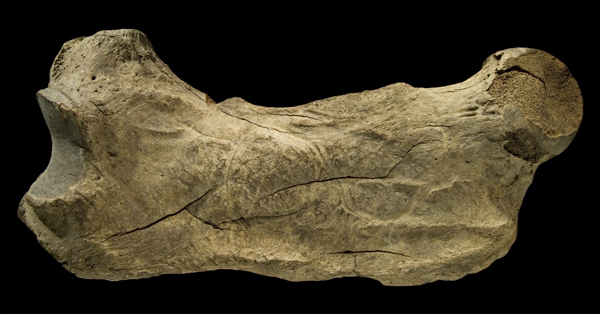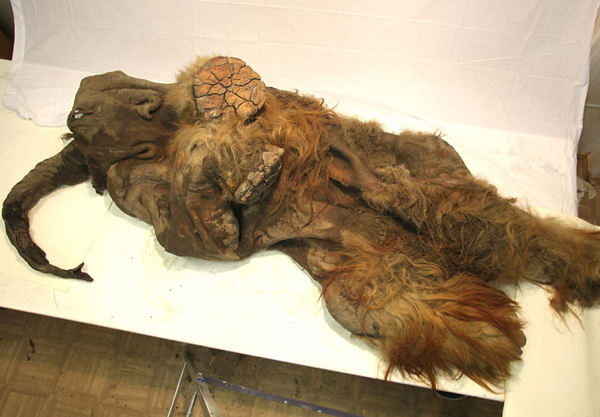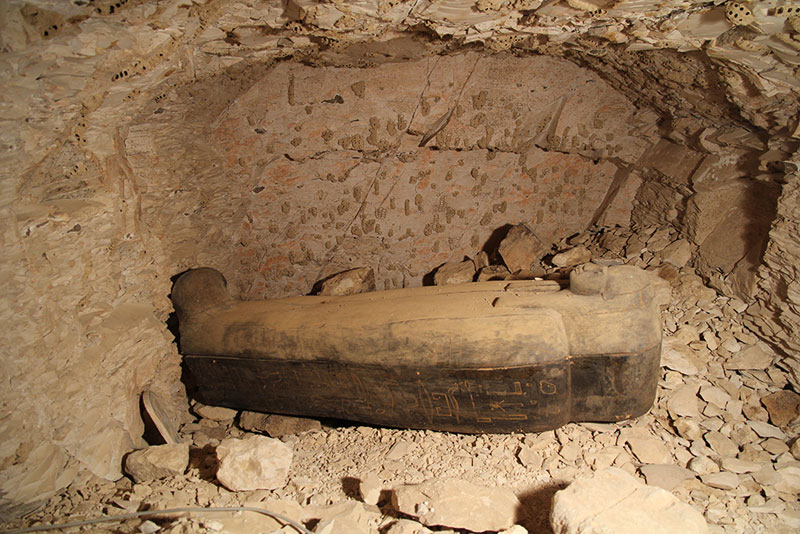It's well known that ancient hunters all over the world took down big game. Recent finds and analyses of remains of extinct megafauna—including a massive ground sloth and juvenile mammoth—have stories to tell about how early humans secured and butchered these long-gone species.
 At the site of Preresa, near Madrid, spain, archaeologists uncovered 82 bones from an elephant or mammoth alongside hundreds of stone tools. Dating to around 80,000 years ago, the bones show cut marks and percussion fractures—the first evidence that humans, in this case Nean-derthals, cracked open thick pachyderm bones to get at the fat-rich marrow inside. (Courtesy Jose Yravedra, Universidad Complutense de Madrid) At the site of Preresa, near Madrid, spain, archaeologists uncovered 82 bones from an elephant or mammoth alongside hundreds of stone tools. Dating to around 80,000 years ago, the bones show cut marks and percussion fractures—the first evidence that humans, in this case Nean-derthals, cracked open thick pachyderm bones to get at the fat-rich marrow inside. (Courtesy Jose Yravedra, Universidad Complutense de Madrid) |  New analysis shows that the remains of a Jefferson's ground sloth—which would have weighed nearly 3,000 pounds—found in a wetland near Cleveland, Ohio, are the only known evidence of humans eating ground sloths outside of South America. More than 40 incisions on one of the sloth's femurs were caused by humans filleting the overlying muscle. At more than 13,000 years old, the finds are the oldest evidence of human occupation in the state. (Courtesy Brian Redmond, Cleveland Museum of Natural History) New analysis shows that the remains of a Jefferson's ground sloth—which would have weighed nearly 3,000 pounds—found in a wetland near Cleveland, Ohio, are the only known evidence of humans eating ground sloths outside of South America. More than 40 incisions on one of the sloth's femurs were caused by humans filleting the overlying muscle. At more than 13,000 years old, the finds are the oldest evidence of human occupation in the state. (Courtesy Brian Redmond, Cleveland Museum of Natural History) |  Preserved in Permafrost for at least 10,000 years, the remains of a juvenile mammoth, called "yuka," show signs that humans in the region may have stolen the car- cass from lions before carefully butchering it and then stashing the rest of the remains for cold storage. the incredibly pre- served remains show scratches and bite marks from lions, after which humans had removed the organs, vertebrae, ribs, and portions of the upper legs. (Courtesy F. Latreille/Mammuthus/MCE) Preserved in Permafrost for at least 10,000 years, the remains of a juvenile mammoth, called "yuka," show signs that humans in the region may have stolen the car- cass from lions before carefully butchering it and then stashing the rest of the remains for cold storage. the incredibly pre- served remains show scratches and bite marks from lions, after which humans had removed the organs, vertebrae, ribs, and portions of the upper legs. (Courtesy F. Latreille/Mammuthus/MCE) |










